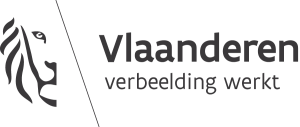WHAT IS ABC ?

ABC = the first letters of the alphabet. ABC = ART BASICS for CHILDREN. But the C not only refers to children but also to critical, to asking questions and to communication. The B in Basics is also that of the Brain or of awareness, and A is the first letter of Art but also of Anthropology and Anima, the soul of things.
Marianne Van Kerkhoven, playwright
ABC vzw (npo) is situated on the border of art and education: it is a laboratory for aesthetic experiences, creative development and artistic awareness.
ORIGEN
ABC (ART BASICS for CHILDREN) is the brainchild of Gerhard Jäger. When he became a father in 1994, he went in search of stimulating books and play materials for his growing son as an indirect visual guide to the arts. This book collection, in which culture and education are central, grew to the extent that he wanted to share it: with other parents, but with teachers, librarians, educators as well, and last but not least, with other children.
The most interesting ideas from the numerous books were selected and transformed into play and workstations: small islands where children and adults, individually or together, could get started using their imaginations, senses, hands, etc in a fun and creative way. And of course they could also rummage in the books where it all started. In this way the interactive ABC studios were born.
At the beginning of 2023, Gerhard Jäger passed on the artistic coordination and quality management of the organization and the ABC house to the team. He still supports the association with his expertise regarding the book and story collection as well as with specific workshops and the follow-up of the ABC archive.
HISTORY
The first ABC studio had a public try-out in 1998 at the BRONKS-festival in Brussels. The studios, a combination library, workshop and exhibition in a refined design, have been invited as guests to many events. In cultural centers from Ostend to Hasselt to Namur, but also at festivals such as Brussels 2000, Lille 2004, Mons 2015, in various exhibitions at Bozar, at the Magritte Museum, etc.
In 2008, ABC found its own building in Schaerbeek. ‘De Fabriek’ (The Factory), a former youth center, experienced renovation over two years, and was transformed into the ABC-house. In the meantime, the multilingual collection of books has continuously grown to some 12,000 books. This Creative Resource Center -as the ABC House is also referred to- is available to anyone who develops projects around art and education, or just wants to gain inspiration for life.
MISSION
Everyone is entitled to a ‘poetic life’. With this ideal in mind, ABC uses the artistic process as a step towards dialogue, and as a reflective tool for young and old to use as support in integrating art into everyday life. To this end, we collect the most inspiring books, ideas, visuals, materials and media in the field of art and education, and unlock that collection in various ways (studios, workshops, publications, etc). The idea is that everyone, regardless of age or background, is able to experiment in and with the collection. This experimental approach should also integrate into everyday reality. In addition, ABC is working on strategies to inspire (future) teachers, through informal learning experiences, to teach in a more artistic and personal way. We are working on a new, interdisciplinary teaching culture in which art (education) is woven into all areas of the curriculum.
“Today art education has no definite goal, no method, no particular content that can be taught, no tradition that can be transmitted to a new generation- which is to say, it has too many. Just as art after Duchamp can be anything, so can art education be anything. Art education is an education that functions more as an idea of education, as education per se, because art education is finally unspecific. (…) It is an education without rules. But so-called real life, where we are subject to an endless variety of improvisations, suggestions, confusions and catastrophes is also without any rules. Ultimately, teaching art means teaching life.”
Boris Groys, philosopher and art critic
GOALS
• Integrating art and culture into society
One of the main objectives of the organization is the development of a more direct relationship between art (in the broad sense of the word) and everyday life. Therefore, ABC wants to provide a more integrated place for art and culture in society, in education and in the life of every individual. Not necessarily by seeing children and youth as future artists or culture consumers, but by making them primarily more familiar with the ways in which artists and other creative spirits deal with the world and life.
• Offering an aesthetic experience in a sophisticated spatial context
ABC also wants to offer its audience an aesthetic experience through carefully selected educational games and other materials and through a visually appealing and inspiring book collection. All this in a qualitative and carefully designed environment.
• Encouraging play and playful learning/Developing talents
The projects focus on enjoyment of the game as a priority, as an act of imagination, creativity, dexterity, communication and sheer pleasure. An ABC-environment is a place where adults learn to play again, and where children play to learn. Through playing, they can explore and develop more intellectually, socially, artistically or spiritually.
• Learning to look, listen, live with curiosity
Art and cultural participation brings up questions, encourages dialogue, broadens awareness, helps us to become conscious of what we see and hear, and over time, to a more conscious life. An important aspect of this is the promotion of image literacy and media literacy, so that children and adolescents learn to critically cope with the myriad of visual and informational stimuli with which they are bombarded today. In times of speed, functionality and an excess of digital entertainment, ABC would like to invite visitors to take time, stop and marvel at a certain shape, color, taste, sound, image, idea …
• Inciting citizenship, empathy, tolerance:
ABC also wants to encourage its audience to articulate why they find a work (of art) good or bad, regardless of the consensus about it. It is important that people enter into dialogue with others with their own perception. When you can talk to others about whether or not a given (art) work appeals to you, you also develop respect for the opinions of others. It creates empathy, and contributes to empowerment. In this sense, art and aesthetic education also have a direct relation with society; they create tolerance and allow you to learn to look at things from different perspectives.
APPROACH
No guru, no method, no teacher’– Van Morrison
Personal creative development of each individual is key in all ABC-projects. This development takes place with each person differently; it varies with age, frame of reference, mood etc. Therefore, it is important to create an environment in which each person, with his or her personality, can find a way within the wide range of books, visuals, educational materials & impulses. Within the strongly varying character of several art disciplines, art historical trends and cultures, everyone can find a starting point. For this reason we also take advantage of the wide variety of techniques, materials and media.
The ABC-approach is holistic. We try, as much as possible, to cover all the dimensions of a human being: the intellectual, emotional, sensory, physical, spiritual, etc. The diversity of what we offer enables the public the opportunity to discover themselves and the society on several levels. Through the world of art, of course, but also by virtue of the abundantly present links with science, philosophy, anthropology, religion, etc. Children/young people who attend an ABC-project therefore come into contact with a wide range of activities, ranging from cognitive play, to manual activities, to philosophy, and to perhaps finish by ‘cooking together.’ The ABC-concept is therefore a complete package of various elements: the rich collection consisting of books, ideas and tools; the design of the space and the personality of the ABC-guide. The whole is greater than the sum of its parts.
WITH THE SUPPORT OF
![]()

![]()
![]()
![]()